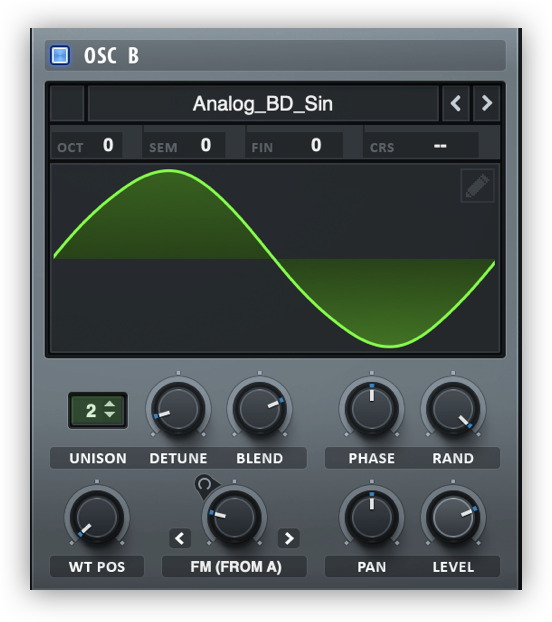Ah, the holiday season!
What better way to lift your (and your roommates’) spirits than to use FM synthesis to create a convincing emulation of everyone’s favorite tonal percussion instrument, the silver bell? In this post, I’ll walk through how to use Serum to achieve this classic sound, and provide the final preset for download as well.
Here’s the silver bell sound we’ll be creating:
Constructing a silver bell via FM synthesis
Let’s consider the components that make up an actual bell. For our patch to sound convincing, we’ll need to emulate 1) the sound of the striker hitting the body of the bell, 2) the pure tone of the bell’s fundamental frequency, and 3) the partials that give the bell its characteristic timbre.
We’ll begin with a sine wave with a slight amount of detuning across two unison voices. This will serve as our carrier wave for FM synthesis.

Next, let’s add a modulator wave. I used the HarmonicSeries stock Serum wavetable. It’s important to note that to achieve the silver bell sound, we’ll need to use a non-integer ratio. In this case, the modulator wave will play at +3 octaves, +2 semitones, and +18 cents relative to the carrier wave.

Note that the LEVEL of this oscillator is all the way down. This is because it doesn’t need to make any sound itself; simply modulating the carrier wave is sufficient to create the timbre we’re looking for. I set the Warp setting of OSC B (the carrier wave) to 22% and set the B Warp parameter of ENV 1 to 28%, meaning that every time Envelope 1 is re-triggered, 28% more frequency modulation occurs.
Speaking of Envelope 1, let’s set a realistic amplitude envelope for this sound. Bells have a quick, percussive attack and then ring for a long time, and we’ll want our amplitude envelope to reflect this.

Now, let’s add a sine wave sub oscillator to fill out the fundamental of the bell, as well as the metal tick 1 noise sample to emulate the sound of the bell’s striker hitting the inside of the bell’s body.

Eagle-eyed readers will notice that the LEVEL is all the way down on the sub oscillator as well. This is done because the ringing tone actually has its own separate envelope in a real bell. Most noticeably, it enters a little slower and lasts a little longer. I approximated that phenomenon with an envelope that looks like this:

At this point, the patch is already sounding great. Let’s wrap this present with a nice ribbon by adding a few effects. The HYPER/DIMENSION module will add interest to the stereo image of the patch, and by using it in combination with the FLANGER and CHORUS modules, we can play with the phase to add some neat timbral artifacts.

Lastly, let’s add some COMPRESSION and REVERB to finish off the sound.

The reason of the season
This bell patch is certain to get you and your loved ones in a festive mood, especially if you download the Serum preset and play the MIDI file for “Carol of the Bells” at full volume using it. Do you have any questions on how we created the preset? Let us know in the comments below.
December 16, 2019



